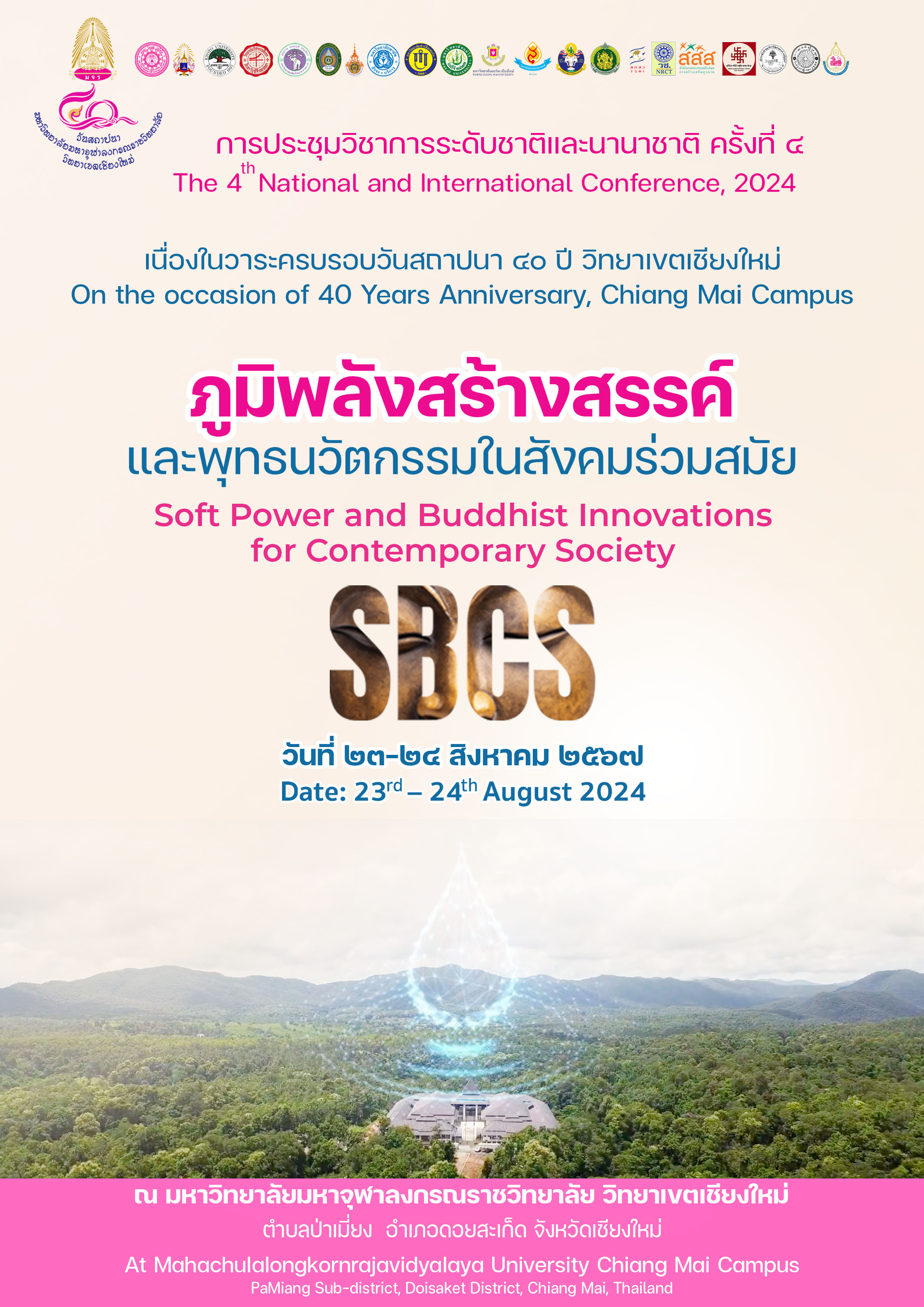พระวิษณุกรรมกับการสร้างสรรค์ประติมากรรมแนวประเพณี
บทคัดย่อ
This research article has three primary objectives: 1) to study the history, beliefs, and characteristics of Vishvakarma in Buddhism; 2) to examine and analyze the forms of Vishvakarma sculptures in Lanna; and 3) to create Vishvakarma sculptures for the preservation of Lanna traditions. This research employs a mixed-method approach, combining qualitative research through in-depth interviews with key informants and focus group discussions with experts in Buddhist art.
The research findings reveal that: 1) The history, beliefs, and characteristics of Vishvakarma in Buddhism depict Vishvakarma as a deity with a significant role in creating various objects and sacred items according to Buddhist legends, showcasing ancient excellence in art and engineering. 2) The analysis of Vishvakarma sculptures in Lanna reveals that these sculptures serve as a medium to convey abstract beliefs into tangible forms. Lanna artisans utilized local materials to create highly valuable artistic works. 3) The creation of Vishvakarma sculptures for the preservation of Lanna traditions developed from studying and synthesizing traditional knowledge, beginning with drafting prototype images and progressing to the casting of Vishvakarma in brass. Additionally, the knowledge and techniques of this creative process have been shared with the public to ensure the sustainable preservation of Lanna traditions.
บรรณานุกรม
สมเกรียติ โล่เพชรัตน์. (2549. ศิลปะสุโขทัย, กรุงเทพฯ: บริษัทอมรินทร์พริ้นติ้งแอนด์พลับลิชชิ่ง จำกัด มหาชน.
ศักดิ์ชัย สายสิงห์. (2554). พุทธปฎิมางานช่างพลังแห่งศรัทธา, กรุงเทพมหานคร: มติชน.
สุรัสวดี อ๋องสกุล. (2557). กษัตริย์ล้านนาเชียงใหม่. เชียงใหม่:วนิดาการพิมพ์.
ศักดิ์ชัย เกียรตินาคินทร์. (2542). “ความสัมพันธ์ระหว่างคุณค่าศิลปกรรมกับการสร้างทัศนคติต่อตนเองและความผูกพันกับชุมชน”. คุรุศาสตร์ดุษฎีบัณฑิต. พัฒนศึกษา: จุฬาลงกรณมหาวิทยาลัย.
พระครูอนุรักษ์บุรานันท์ (บุญชื่น ฐตธมฺโม). (2554). “ศึกษากระบวนการอนุรักษ์พุทธประติมากรรมหินทราย : กรณีศึกษาพิพิธภัณฑ์เวียงพยาว (วัดลี)”. วิทยานิพนธ์พุทธศาสตรมหาบัณฑิต. บัณฑิตวิทยาลัย: มหาวิทยาลัยมหาจุฬาลงกรณราชวิทยาลัย.

